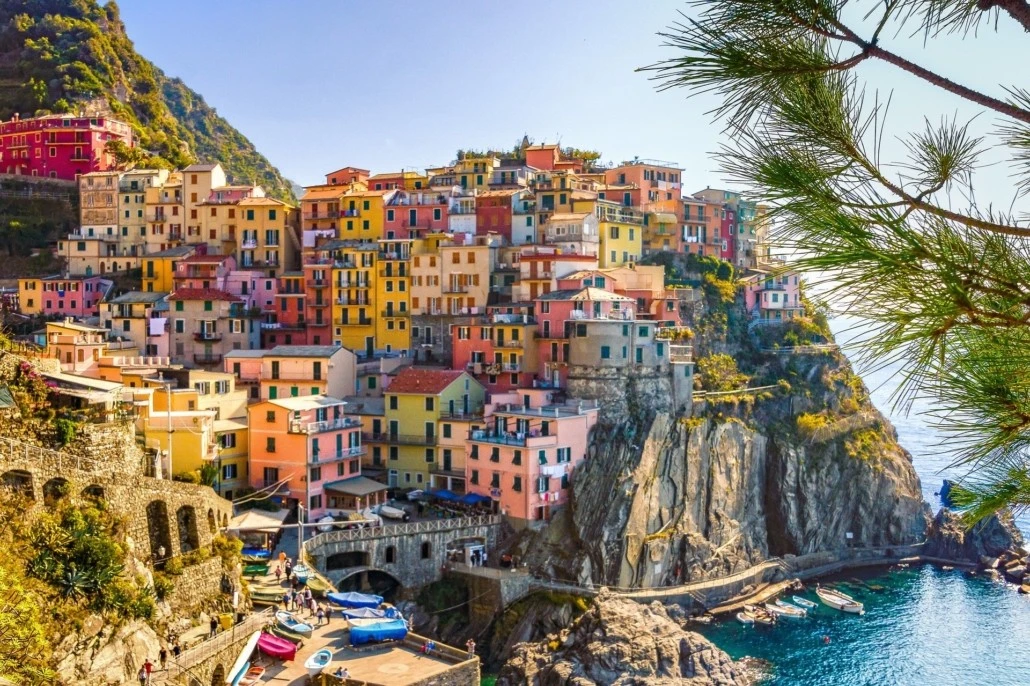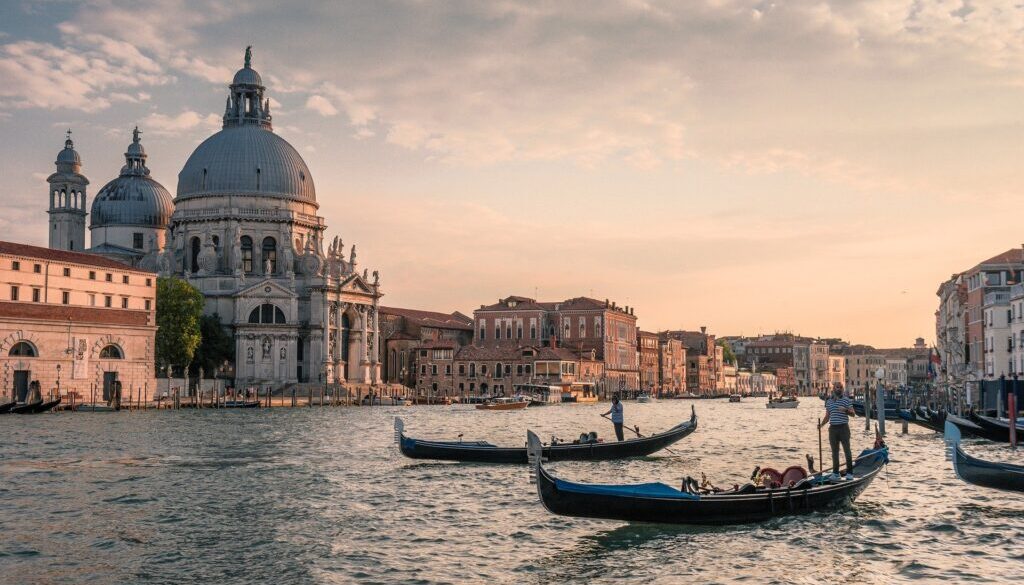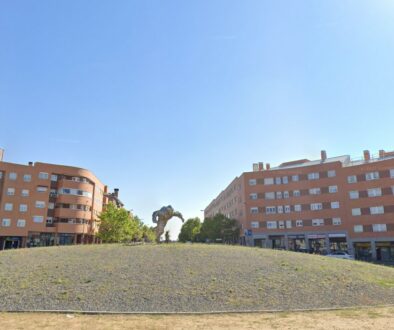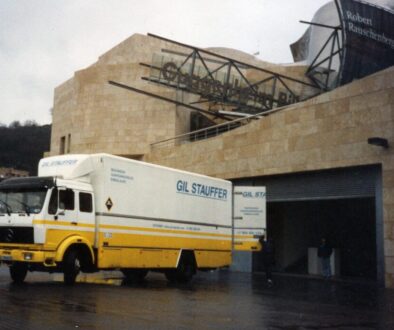Moving to Italy: Useful information and tips for moving to Italy
Moving to Italy: The land of fashion, pasta and culture
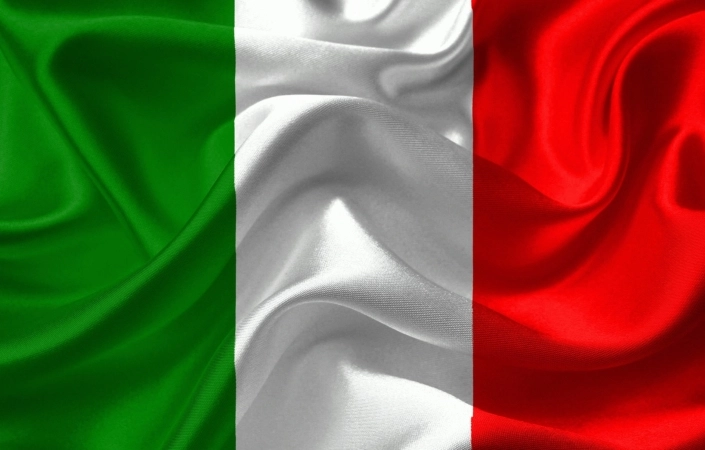
You could say that the whole of Italy is a work of art in itself. It has been the home of many European cultures such as the civilisation of NuragaThe Etruscans, the Greeks and the Romans left an important legacy. It was the cradle of Humanism and the Renaissance and is currently the country with the most World Heritage Sites, with 54 treasures on the list. It is also the third most visited country in the European Union each year, with Rome being the second most visited city in Europe.
Some notes on Italy's economy
According to data provided by the Chamber of Commerce of Madrid, Italy is one of the eight most industrialised countries in the world, and one of the top ten economies (in terms of global GDP volume) and is forecast to grow by 4.2% in 2022, according to data from the International Monetary Fund.
It is a market that is very close to Spain, which is home to almost sixty million consumers with high purchasing power (€30,040 in 2021). Italy is Spain's third largest customer and fourth largest supplier and, between January and November 2021, Spanish exports increased by 30.5% compared to the same period in 2020, registering a volume of €24,445.7 million.
The country is a net importer of raw materials and semi-finished products for its downstream industry and there are business opportunities in sectors linked to National Recovery and Resilience Plan fundsespecially in infrastructure, mobility, energy transition and the digital agenda.
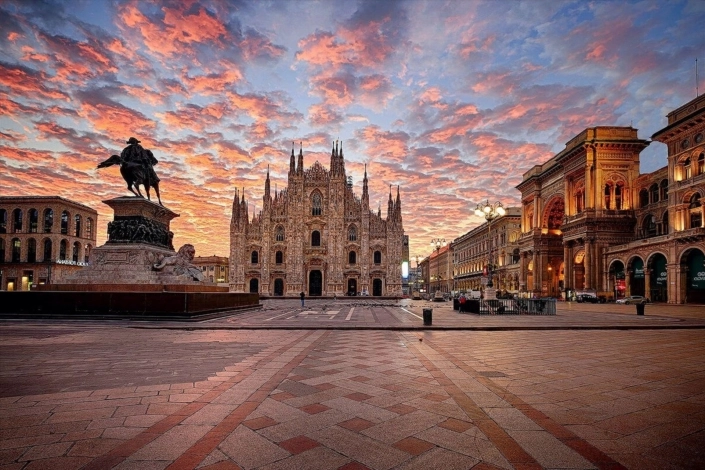
In terms of the economy, the country is divided into two zones: the north, which is more industrialised and developed, and the south, which is agricultural and less developed, dependent on government subsidies and with a higher unemployment rate.
The industrial activity has been the engine of Italian development and the current backbone of its economy.. In contrast, agricultural activities have experienced a considerable decline, both in terms of employment and in terms of their share of GDP.
Currently, there is an interest in to promote business cooperation and trade exchanges between Spanish and Italian companies in sectors such as agri-food and semi-finished products, transport infrastructure, renewable energies, circular economy and waste management, tourism and related direct and indirect services.
The tourism is one of the most prominent sectors of its national economy, having registered 38 million tourists in 2020 (despite the pandemic) making it the fifth most tourist-intensive country in the world and Rome, its capital, an exponent of the most visited destinations.
Working in Italy
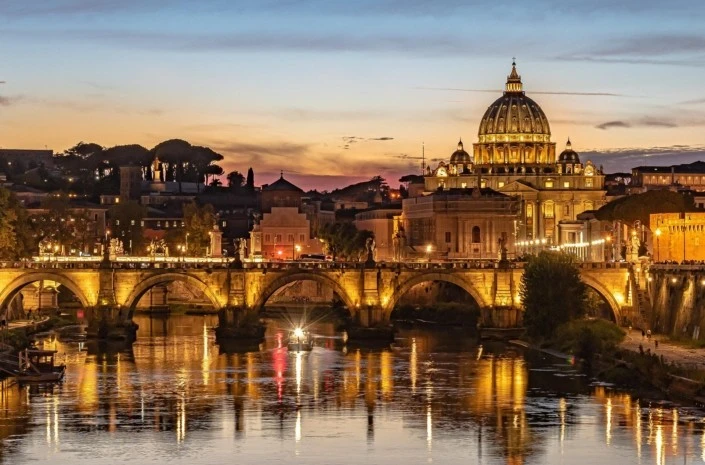
If you are an EU citizen, you do not need to complete any prior formalities to work in Italy. You can simply enter the country and look for a job during the first three months of your stay. To do this, you can contact the agencies known as "employment agencies".Agenzie di LavoroInterinale". For more information on this subject, you can click on this link where you can find an explanation of the requirements for working in Italy.
The main opportunities for working in Italy can be found in the centre and north of the peninsula. The south is an area more dedicated to tourism and local commerce, so job opportunities are more focused on those who want to open a business and make a living from tourism. Some of the most demanded professionals in this country are those in the health sector, such as nurses, pharmacists, physiotherapists, since in Italy health careers are not the most chosen by Italians. There is also great demand in the textile sector, such as clothing shop assistants or textile factory workers.
One of the key factors when looking for a job in Italy will be the language. If you are looking for a job in Italy, you can find a wide range of jobs in the following link. offers for Spanish-speaking staff.
Cities to live and work in Italy
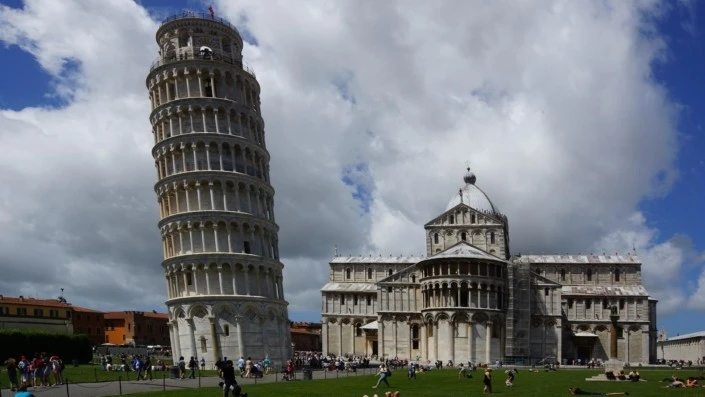 The regions with the greatest opportunities are those of the centre-north, where the cities of Rome, Milan, Florence and Pisa. Italian industry is located in the North. Italy's main industrial activities are in the textile sector, with the main fashion capitals in Milan and Florence. Many of the Italian fashion brands have part of their factories in Italy, so the demand for labour for these industries is more than remarkable.
The regions with the greatest opportunities are those of the centre-north, where the cities of Rome, Milan, Florence and Pisa. Italian industry is located in the North. Italy's main industrial activities are in the textile sector, with the main fashion capitals in Milan and Florence. Many of the Italian fashion brands have part of their factories in Italy, so the demand for labour for these industries is more than remarkable.
The cities that offer the most jobs in the tourism sector in the most industrial area are: Venice, Milan and Genoa, in central Italy: Rome, Florence and Pisa and on the coast: Naples and the Amalfi Coast. In Italy the tourism is one of the main drivers of its economy and most of Italy's wealth is generated during the months of May to September. This is the best time of the year to work in Italy as Italian job vacancies increase by 45% compared to the other months of the year.
As mentioned above, for people with disabilities, it is important to European passportThere are no restrictions on working in Italy as there is free movement of workers within the European Union. Thus, all EU citizens will be able to live in Italy without having to ask for any additional documents. However, people who do not have a European passport will need the approval of the Ministry of Labour before being hired.
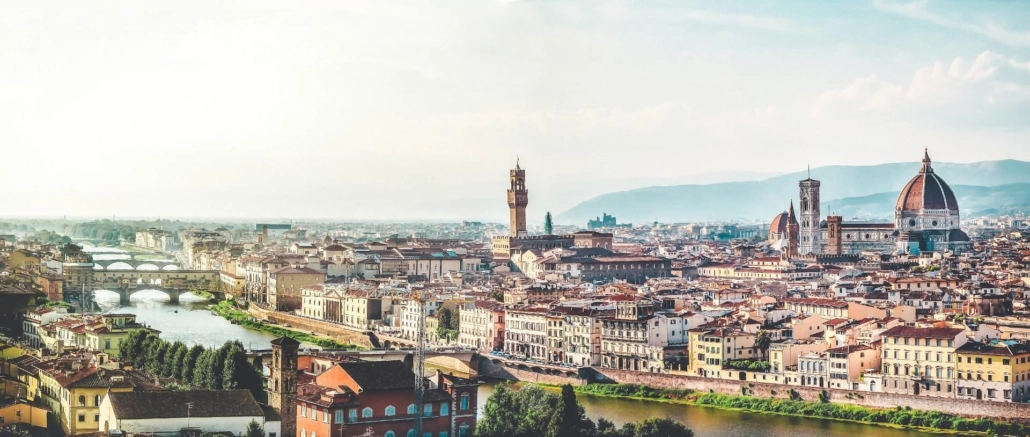
Tourism in Italy
As we said in the introduction to this article, Italy can be considered a jewel in its own right and it is very difficult to summarise everything there is to visit in this beautiful boot-shaped country. However, the following are just a few of the highlights the most emblematic places and also the most visited:
- The Coliseumthe Roman Forumthe Trevi Fountainthe Palatine Hillthe Pantheonthe Borghese Museum at Roma.
- The Museum, St. Peter's Basilica, and the Vatican City.
- The Tower of Pisa.
- The Amalfi Coast.
- The Cathedral of Santa Maria del Fiorethe Baptistery of St. Johnthe Bargelio Museumthe Basilica of Santa Cruz and the Uffizi Gallery at Florence.
- The St Mark's Basilicathe Doge's Palacethe Correr Museum and the Piazza San Marco at Venice.
- Santa Maria Delle Graziathe Castelo Sforcescothe Civic Aquariumthe Poldi Pezzoli Museumthe Theatre of La Escalathe Milan Cathedral and the Monumental Cemetery from Milan.
- The Catacombs of the Capuchins at Palermo.
- The Mole Antoleniana at Turin.
- The archaeological site Valley of the Temples in Agrigento and the Taormina Theatre at Sicily.
- The ruins of Pompeii in the Campania region.
- The island of Capri.
These wonderful places are just a small sample of all there is to see in Italy, as all over the country you can find villages that are true works of art, landscapes of unspeakable beauty and charming cities everywhere. So, if you're moving there, our recommendation is to visit the country in good time to, little by little, discover places that will leave an indelible mark on you for the rest of your life.

Italian Gastronomy
Italian food is rich and varied. Italian cuisine, which is included in the so called Mediterranean cuisine and is imitated and practised all over the world. It is well known for its most famous dishes, such as the pizza, pasta and risottoBut what is certain is that it is a cuisine where the abundant smells and flavours of the Mediterranean coexist.
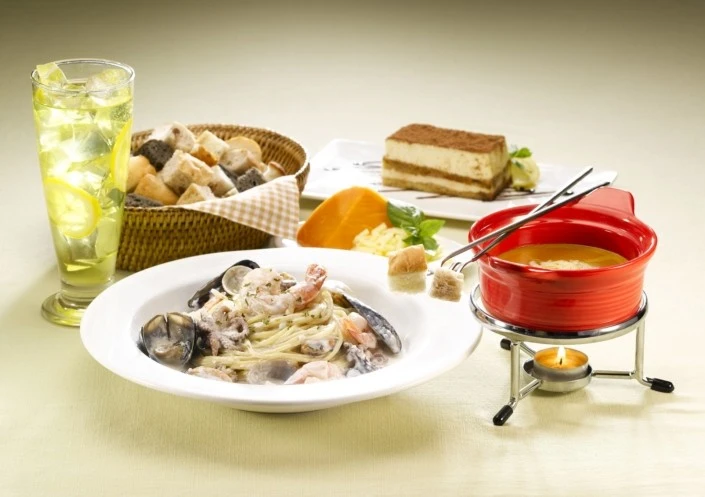
There is plenty to choose from, as the preparation of the dishes - in many cases, from home cooking- is made with care and dedication. Italians love the food of the mamma and this is noticeable in all the restaurants and trattorias.
Normally, the meal begins with the antipastowhich is based on a variety of starters made from various products, usually including tomatoes, cheese from mozzarellathe prosciuto (ham) and other typical sausages, olives and other natural products. All of this is accompanied by breads, among which the most outstanding are the focaccia.
Some typical dishes are vegetable soup, cheeses and anchovies called "sopa de verduras, quesos y anchovies". bagna caudaa dish made from chickpea flour, called "a dish made from chickpea flour". farinattavegetable omelette or frittata or the salad caprese.
Italians are fond of products of the sea and, in the coastal areas, especially in southern Italy, you can eat very good fresh fish, squid, mussels and a variety of shellfish.
With regard to the meatthe carpaccio and the osobucco are their star dishes, as they like red meat. However, they also eat chicken, vegetables, legumes, cereals, eggs, dairy products, etc.
The dessertssuch as the well-known tiramisuare usually craftsmen. Just like the ice cream Italian, which are world-famous and well-deserved, as their texture and flavours are unique and delicious. And don't forget to try something very typical called castagnaccioa cake made with chestnut flour, which is typical of Tuscany..
Italy is also a land of wines. Each region produces its own specialities, with Veneto and Tuscany accounting for most of the country's production. One of the best known and therefore most popular wines is Tuscan wine. Chiantia variety produced mostly from grape Sangiovese. But there is plenty to choose from and a good diversity of different flavours and aromas to enjoy.
Curiosities about Italy
- In Italy there are three volcanoes assets (Etna, Stromboli and Vesuvius) and 29 inactive ones. Among the latter is the volcanic island (now submerged) of Ferdinandea
- Florenceonce the capital of the country before Rome, is considered to be the quintessential Renaissance city. It is said that of the 10,000 most important artists of the second millennium, at least 3,500 would have lived or worked in this city.
- Lunchtime is sacred for Italians. If you walk around a small town between 12 and 2 p.m., you won't see people on the streets and you will only hear the clatter of plates and cutlery. The tradition of respecting the lunch hour is mostly found in the cities of the interior of the country.
- Although Venice is known as the city of the channelsIn Italy, there is another city with more kilometres of canals: Milan, whose "canals" are the most popular in the world.Navigli"They are a total of 142 km long.
- Italy has two independent states within its borders: Vatican and San Marino.
- The famous song "Bella Ciao"is a sign of resistance against the oppressor and became world famous in World War II, when the Italian resistance was fighting against Mussolini's regime.
- The University of Bologna is the oldest in Europe, dating back to 1088.
- Each region of Italy has its own dialectThe official language is Italian, although Italian is the official language.
- In Italy there are more than 200 types of pasta different.
- Pizza was invented in 1889 to please Queen Marguerite, using the three colours of the flag (tomato red, mozzarella white and green basil).
- Italy has some 800 islandsThe villages are not all inhabited.

More information and advice
If you are finally moving to Italy, you may be interested in the following information:
- Our podcast of expatriates in Italy.
- If you're going to take the final step, you'll be able toGet a quote for your international move as soon as possible. Gil Stauffer has been moving anywhere for more than 115 years. We will accompany you throughout the whole process.
You may also be interested in the following articles:
- Positive aspects of moving to another city.
- Tips for happiness abroad.
- International Moving Price: International Moving Prices and Information 2023.
- Changing cities for work: Tips if you are moving for professional reasons.
